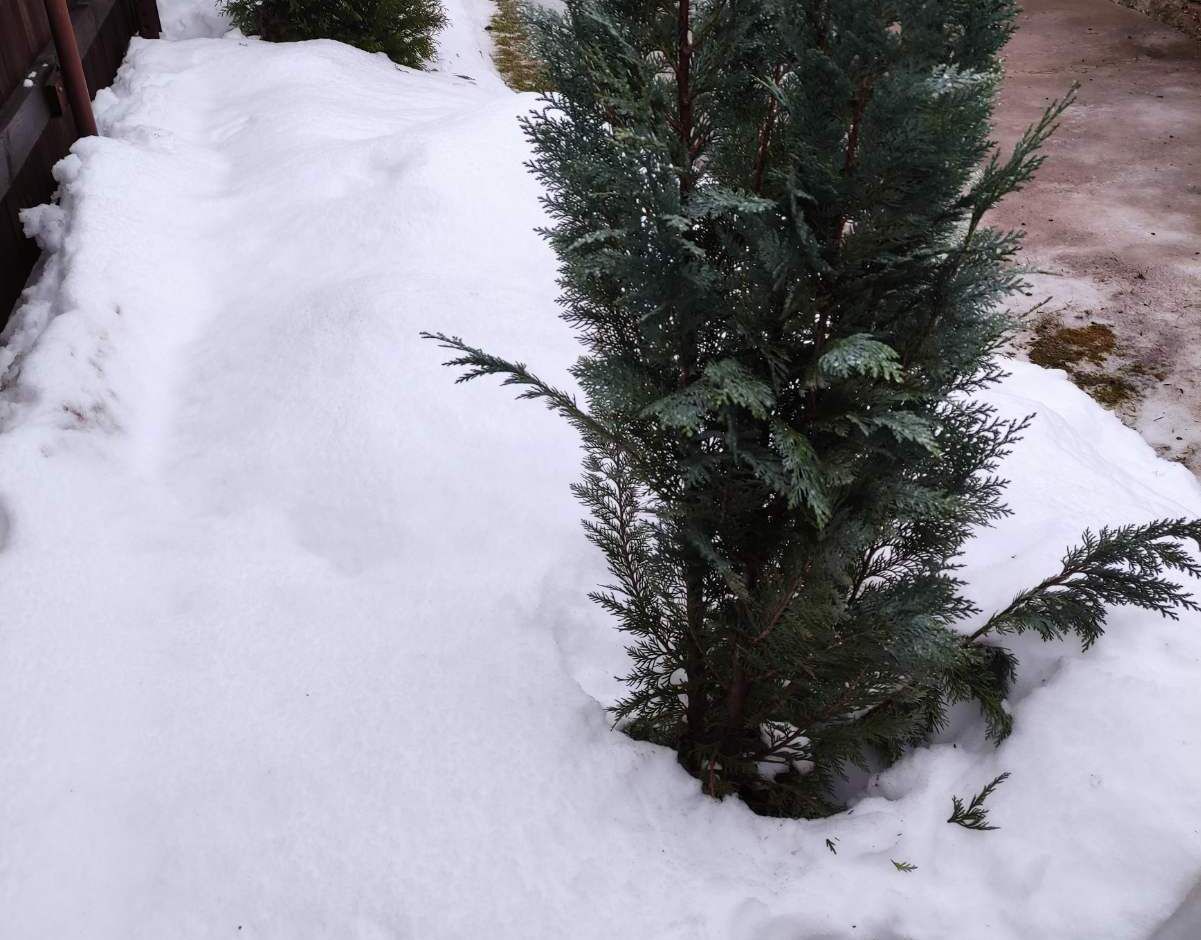What to fertilize with and when to fertilize thuja: basic rules
Thuja is most often planted along the fence of a plot. Often it is also the only barrier separating the plot from the neighboring territory.
However, thujas are suitable not only as a traditional hedge - due to their relatively low requirements and ease of care and formation, they are often used in gardens as a single decoration.
The biggest advantage of thuja, besides its ease of cultivation, is its lush and dense shoots and intense color, making it an elegant and graceful decoration for your property.
Moreover, it is a year-round species, so even in winter you will be greeted in the garden by fresh and calming green bushes, says expert Anastasia Kovrizhnykh
However, the fact that thuja is a year-round species requires proper order and consistency of care work, mainly the application of fertilizers.

It is important to note that fertilizers must be adapted to the season, natural development and needs of the plant.
When to fertilize thuja
In general, fertilizing thuja is determined by the abundance of nutrients in the soil. If your site is located on a sandy site, and the substrate is light and infertile, the requirements for the bushes will be much higher, and the doses of fertilizers should be larger and more frequent.
Unlike humus and fertile soils, which usually contain incomparably more nutrients, so the application of fertilizers can be moderate.
Three main dates for fertilizing thuja:
- spring - with the beginning of the growing season, at the turn of April and May
- summer - fertilization is carried out in June
- autumn – at the turn of September and October.
Thus, fertilizing the bushes should be done 2 or 3 times a year, and dividing into periods is aimed at helping to determine the type of fertilizer needed.
This is key advice, because the composition of the product used significantly affects the condition and proper development of the plant, and also properly protects the bushes from winter frosts.
As we have already mentioned above, the type of fertilizer and its composition depend on the season. For spring and summer fertilization, preparations in which the main component is nitrogen are recommended.
In addition to nitrogen, spring and summer fertilizers should contain a large amount of macro- and microelements in quantities corresponding to the needs of the shrub.
Among the elements that play a significant role in plant development, magnesium stands out first and foremost, which prevents yellowing and browning of shoots and the dying off of twigs.
It should be emphasized that nitrogen fertilizers should be applied only in spring and summer, and the last feeding with a preparation containing this element should not be done later than July.
The main reason is the effect of nitrogen, which stimulates plants to grow, which, given the approaching winter, could contribute to insufficient lignification of young shoots, and, consequently, freezing of the plant.
The last autumn feeding should be done with a preparation with a high content of phosphorus and potassium. These elements strengthen the bush before winter and increase its frost resistance.
What fertilizers to choose for thuja
In garden stores you will find a wide range of fertilizers that can be used to feed shrubs.
Almost every manufacturer has in its assortment preparations that can be successfully used for the care of thuja.
You can choose from multi-component mineral fertilizers that, in addition to essential nutrients such as phosphorus, nitrogen and potassium, contain properly balanced proportions of magnesium, iron and other macro- and microelements.
Correctly selected ingredients affect the color, as well as the general condition of the bushes.
Experienced gardeners recommend adding organic fertilizers, such as compost or manure, at least once a season.
Organic fertilizers provide plants with many valuable elements, humus and valuable microorganisms, and their greatest advantage is the absence of the possibility of over-fertilization.
Organic fertilization is often overlooked, although as you can see, it shows many important positive effects that result in improved plant and substrate health.
If you are unsure about which type of fertilizer to choose, consult a qualified gardening professional who can advise you on available alternatives.
A good solution is also to use fertilizers designed specifically for thujas and conifers, which will reduce the risk of confusion.
Fertilizer dosage for thuja
Mineral fertilizers are available in granular form, liquid fertilizers, and even as a long-acting product that releases nutrients into the soil for up to 3 months.
Long-acting fertilizers are more expensive than traditional ones, but due to their prolonged action, one feeding per season is enough.
Fertilizers in the form of granules should be scattered along the trunk of the bush, carefully mixed with the substrate, and then watered generously.
Liquid fertilizers should be diluted in water before application. Remember that you should never water the bushes with concentrated fertilizer directly from the bottle, because such a strong concentration can burn the roots and lead to the death of the plant.
Doses of individual drugs should be in accordance with the manufacturer's recommendations. Do not increase the recommended proportions on your own.
It is worth emphasizing that feeding thuja with mineral fertilizer is much more dangerous for the plant than its deficiency and can result in damage to the bush.
To increase the absorption of nutrients in the substrate, it is recommended to use a mycorrhizal vaccine, which supports the development of thuja and immunizes them to unfavorable environmental conditions.
Earlier we wrote about how to speed upthe fruiting of zucchini .
